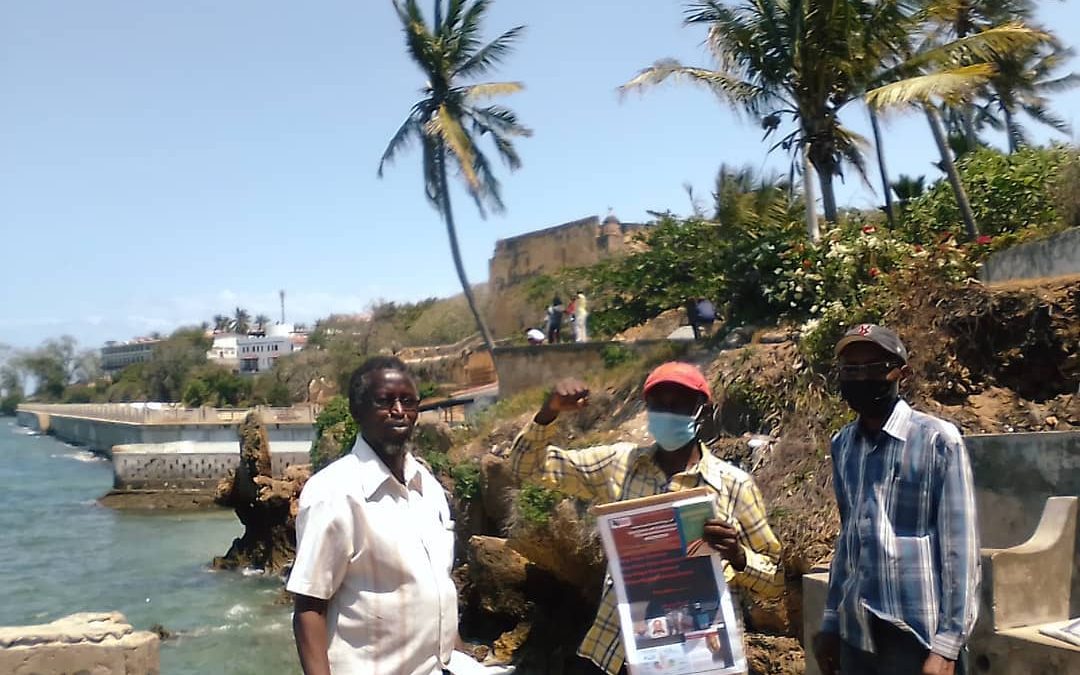The hype about the Blue Economy has been on the cards as Jubilee Government’s major plank in delivering development. Behind this noise and unknown to many Kenyans this hype is all but hot air. Maritime training is a tatty mess with a Maritime Academy that is rudderless, moribund and led by clueless leadership that is not fit for purpose. KMA the regulator is a lost cause with a game warden as its top leader it is difficult to see how the Blue Economy can take off in Kenya. Students who have gone through the current courses must be told what they possess is null and Kenyans must stop enrolling for these useless credentials. His Excellency President Uhuru Kenyatta must act swiftly to save his own legacy on this matter. EDITOR; PATRICK OCHIENG
ANDREW MWANGURA writes on…
The manner in which the government of Kenya is conducting merchant maritime education and training programs is riddled with chaos and confusion. For one, Kenyan seafarers trained at and issued with certificates by Bandari Maritime Academy (Formerly known as Bandari College) from January 6, 2020 to date are holding worthless and unlawful certificates.
Kenya’s STCW fate
This trend, if it persists, will not augur well for Kenya as a credible maritime trainer in the eyes of the International Maritime Organization (IMO) that manages the white list, the official roll of countries deemed to have complied with the stringent global standards. Those are countries that have properly implemented the STCW-95 and STCW-F conventions, and to remain on the White List they always must update their laws and maintain the set training standards. White list countries are also required to provide detailed information to IMO concerning administrative measures taken to ensure compliance with the Convention. For instance, ships flying flags of countries that are not on the White List are increasingly targeted by Port State Control inspectors. A flag state that is on the White List may, as a matter of policy, elect not to accept seafarers with certificates issued by non-White List countries for service on its ships.
Should Kenya be delisted owing to the mess in its tertiary institutions, Certificate of Competence (CoC) of cadets in the maritime training institutes would not be recognized by flag states on the IMO’s White List. Sea training world-wide is always a vital stage in forming the future officers who will hold responsible positions of marine officers in the merchant, port managers, cruise and exploratory vessels. There are five (5) fundamental issues that impede Kenya’s seafarer training:
Firstly, Bandari Maritime Academy is operating under a misplaced institutional framework. Secondly, Bandari Maritime Academy’s management is not fit-for-purpose. Thirdly, the Board of Directors of Bandari Maritime Academy is moribund and unable to provide the required strategic leadership. Fourthly, Kenya Maritime Authority, the industry regulator, is currently in terminal decline. Fifthly, the policy leadership – vested in the State Department for Shipping and Maritime – is absent and clueless. In addition to that, Bandari Maritime Academy lacks qualified and approved teaching staff. Also, it lacks the appropriate training facilities. When under KPA, the then Bandari College received budgetary support of over 600 million annually for operations and maintenance and had in FY 2017/2018 set aside 1.5 billion to transform the institution.
Since its 2018 re-establishment as BMA, the institution is unable to convince the National Assembly to appropriate sufficient funds for its development. To address these problems, the government and key stakeholders must consider the following measures: Hire suitably qualified management staff and instructors and preferably appoint a merchant mariner to head BMA. The BMA must also hire suitably qualified and approved Heads of Departments, instructors and lecturers. Reform Kenya Maritime Authority (KMA) to conduct robust regulation of training standards. KMA is a regulator in terminal decline caused by, among other reasons, members of its Board of Directors – KMA’s the governing organ – who are not fit-for-purpose; the current Director-General, a game warden by training and experience, is unsuitable and his performance dwindling. He’s now dragging KMA into a vast savannah and he is leading a demoralized and despondent staff.
The head of state must appoint a new Board of Directors; hire a new Director-General who knows – or can learn – what needs to be done; address the issues causing staff despondency. In the meantime, Bandari Maritime Academy must not admit new students; also, it should defer its current training until it obtains IMO’s and KMA’s approval. It doesn’t even take an expert to see that Maritime Training and Education in Kenya is not sound.
Firstly they have to recruit a training officer a qualified Master Mariner or Chief Engineer and a keen educator to liaise on the sea board training. The seaboard training should not be trips for circumnavigating the world and then walk away. The twelve months should be guided under a training manual and all the exercises recorded in the training book. As we are talking to date Kenya Maritime Authority has not put up that system. This is very essential for the workshops and seaboard training. These tools are crucial to enable students pursue certificates of competency. This is fundamental in training cadets and it is the mandate of the regulator. That is why we must have a National Merchant Navy Training Board for guidance. It is disheartening to note that, there is non-2nd Engineer examined by KMA since Maritime Education and Training education was introduced in Kenya in 2010.
It is also annoying to note that since JKUAT started teaching marine Engineering, it hasn’t produced a second engineer or chief engineer for over 10 yrs. In fact, local maritime institutions have not rolled any one beyond 2nd Engineer or a practicing 3rd Engineer. The only way out is to establish a National Merchant Navy Training Board and radical changes at the Kenya Maritime Authority.

